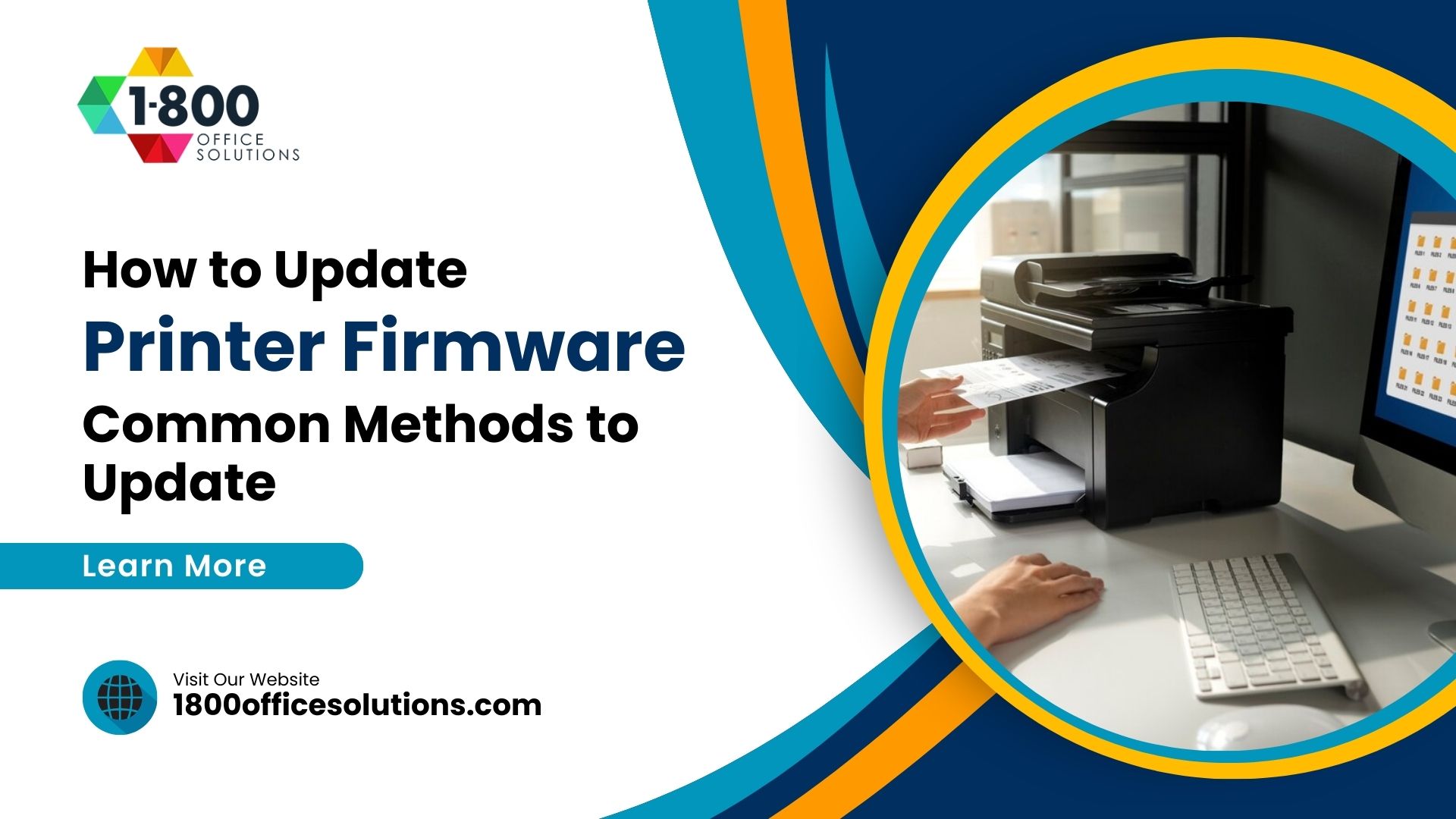How to React to a Print Security Breach?
Safeguarding against potential print security threats presents a formidable challenge. A survey conducted by Quocirca in 2023 revealed that 39% of organizations acknowledged the increasing difficulty in meeting print security requirements.
It is crucial to adopt a proactive approach and anticipate the possibility of a print security breach. While the hope is to never encounter such an event, being prepared is paramount in mitigating potential risks.
Congratulations on taking the first step by discovering this article, which aims to assist in fortifying the security of your organization’s print fleet. Upon completion of this reading, you will be equipped with valuable insights tailored to enhance print security and minimize the likelihood of a breach.
Print security encompasses various elements, including safeguarding printers, firmware, and endpoints from malicious attacks. A robust security strategy is essential, especially in the face of evolving cybersecurity threats such as malware, phishing, and hacking attempts.
Securing printers involves more than physical protection; it extends to securing data transmission, implementing encryption protocols, and fortifying against vulnerabilities that could be exploited by hackers. Sensitive data stored or processed by printers poses a significant security risk, making encryption and access controls indispensable.
What Is a Print Security Breach?
A print security breach transpires when confidential information is inadvertently or maliciously exposed to unauthorized individuals during a print job or through print devices within the print infrastructure. These breaches can occur in organizations utilizing managed print services or handling sensitive data, leading to potential cyber threats and document security concerns.
It is crucial for organizations to stay vigilant and keep up with print security to mitigate the risk of such security incidents. Implementing robust security protocols and access controls across print devices and infrastructure is essential to safeguard against print security breaches.
Print Security Breach Examples
Accidental Print Security Breaches
Accidental Print Security Breaches can occur due to various factors that compromise the confidentiality of printed documents. Here are some examples:
Forgetting to pick up a printed document: An employee prints sensitive information like corporate financials or personal data but forgets to retrieve it from the printer, leaving it exposed on an unsecured printer.
Walking away with more than your document: In shared printer environments, multiple employees printing simultaneously may inadvertently grab additional documents while retrieving their own, potentially leading to a security breach. This situation can also prompt reprinting of lost documents, causing unnecessary paper waste.
Printer output visible to unauthorized individuals: Printers located in accessible areas like reception desks can inadvertently expose printed documents to customers or visitors, posing a risk of unauthorized data access.
While accidental breaches may seem more like inconveniences than serious security threats, they still pose risks. If sensitive information falls into the wrong hands, it can be exploited for malicious purposes.
To mitigate these risks and meet print security demands, implementing robust security measures is crucial. Measures such as pull printing, follow-me printing, and user-authenticated passwords enhance document security on shared printers. These security features help reduce the likelihood of unauthorized access and potential breaches.
Additionally, conducting regular security assessments and adopting a zero-trust approach to print security can bolster defenses against attackers seeking to exploit vulnerabilities in printers and copiers. Network security protocols, multifunction printer (MFP) security features, and strong authentication methods like passwords play a vital role in fortifying print security and preventing breaches.
By integrating these security measures and adopting a proactive approach to print security within managed print services (MPS), organizations can enhance overall network security and safeguard sensitive information from potential threats and breaches.
Print Security Cyberattacks
Print Security Cyberattacks can be a significant threat to organizations, as cyber attackers exploit various security vulnerabilities, including unsecured endpoints like networked printers and IoT devices. Despite being lower on the security agenda compared to other elements, print-related data breaches can have devastating effects if left undetected.
Security leaders must prioritize print management and implement best practices to address these security challenges effectively. Ensuring that printers and print infrastructure are up-to-date with security patches and employing robust security solutions are essential steps in mitigating risks.
Cyber attackers may target unsecured printers or exploit loopholes in printer security software to gain unauthorized access to an organization’s network. Once inside, they can monitor activities and attempt to extract sensitive information.
To counter these threats, organizations should work with print suppliers that have robust security capabilities and prioritize information security. Encrypting print-related data and implementing access controls are further measures that can enhance overall security posture.
Collaboration between security teams, including Chief Information Security Officers (CISOs), and regular assessments of print security can lead to improved security outcomes and early detection of potential breaches. By integrating print security into the organization’s broader security strategy, security leaders can effectively defend against print-related cyberattacks and safeguard sensitive data.
How To Prepare Your Printers Against a Potential Cyberattack
As print security concerns continue to rise, especially with the increasing adoption of Internet of Things (IoT) and cloud printing technologies, it is becoming harder for large enterprises to keep printing practices secure. Data losses due to print-related breaches in 2022 have highlighted the amount of damage and financial loss such incidents can cost companies. In fact, data breaches related to paper documents have been on the rise, with the highest incidence across enterprises currently using Managed Print Services (MPS).
To mitigate risks and strengthen your line of defense against potential cyberattacks on printers, here are key steps to prepare your printers:
- Change Default Passwords: Start by changing the default administrator password on your printers. Use a strong password with a minimum of 7 characters, including a mix of letters, numbers, and symbols, to enhance security.
- Keep Firmware Updated: Regularly update your printer firmware to ensure that the latest security patches and fixes are installed. Updated firmware not only adds new functionality but also addresses known vulnerabilities.
- Implement Secure Printing Techniques: Utilize secure printing techniques like Follow Me Printing to ensure that printed documents are collected by authorized users and not left unattended in output trays where they can be accessed by unauthorized individuals.
- Include Endpoints in Security Plans: Incorporate printers and other endpoints into your IT Security and Business Continuity Plans. Develop an incident management plan with a standardized response protocol to effectively address and mitigate print-related security incidents.
- Secure Data Behind Firewalls: Ensure that sensitive data, including customer data, is stored securely behind firewalls and access controls to prevent unauthorized access and potential breaches.
By taking these proactive measures and integrating print security into your overall security strategy, you can enhance data security, reduce the risk of cyberattacks on printers, and protect your organization from potential financial and reputational losses associated with print-related breaches.
What To Do if a Print Security Breach Occurs
In the event of a print security breach, a well-defined security response protocol is essential to effectively handle the situation. The protocol should be adaptable, considering varying levels of response based on the potential damage caused by the breach. Here is a concise outline of a response plan:
- Confirm: Investigate the incident to determine if a print security breach occurred. Assess whether it was an accidental occurrence by an employee or if there was malicious intent from within or outside the organization. Evaluate the extent of potential damage to determine the necessary scope of response.
- Contain: Take immediate action to quarantine the affected area or devices to prevent further spread or access to sensitive information.
- Communicate: Inform senior management or relevant stakeholders about the breach and share your findings. Collaborate with them to develop a comprehensive plan to address and mitigate the impact of the breach. Additionally, consider communicating with affected users to provide necessary information and guidance.
- Remediate: Act decisively to eliminate the threat and mitigate any damage caused by the breach. This may involve applying security patches, resetting compromised credentials, or implementing additional security measures.
- Conduct a Security Audit: Perform a thorough review of the incident to understand what transpired. Use the insights gained to develop and implement a robust plan aimed at preventing similar print security breaches in the future. This may include enhancing security protocols, providing training to employees, and regularly assessing and updating security measures.
By following this structured approach, organizations can effectively respond to print security breaches, minimize potential damage, and strengthen their overall security posture to prevent future incidents.
Conclusion
In conclusion, reacting to a print security breach requires a well-thought-out and proactive response plan. By following a structured protocol that includes confirming the breach, containing the impact, communicating effectively with stakeholders, remediating the threat, and conducting a thorough security audit, organizations can effectively mitigate the damage caused by such incidents.
It’s crucial for organizations to prioritize print security and integrate it into their overall cybersecurity strategy. Implementing best practices such as changing default passwords, keeping firmware updated, using secure printing techniques, and including endpoints in security plans can significantly reduce the risk of print security breaches.
Furthermore, continuous monitoring, training employees on security protocols, and collaborating with security experts can further enhance an organization’s ability to prevent, detect, and respond to print security breaches effectively.
By staying vigilant, proactive, and prepared, organizations can protect sensitive data, maintain business continuity, and uphold trust with customers and stakeholders in the face of evolving cybersecurity threats.












